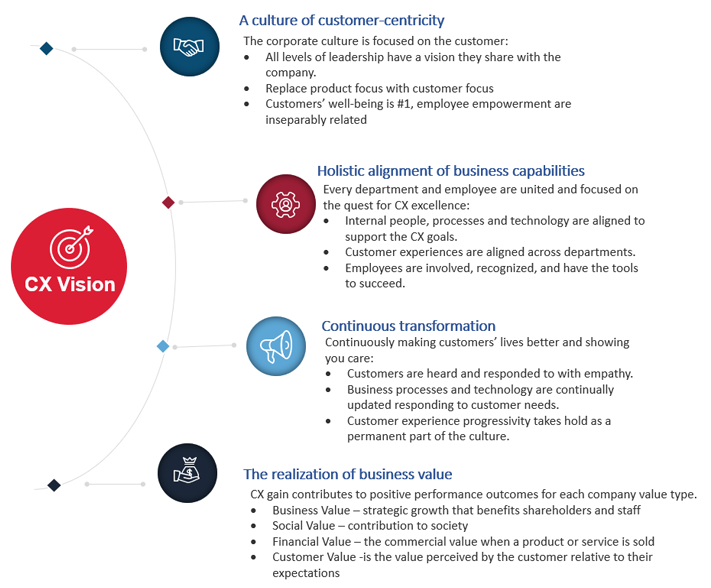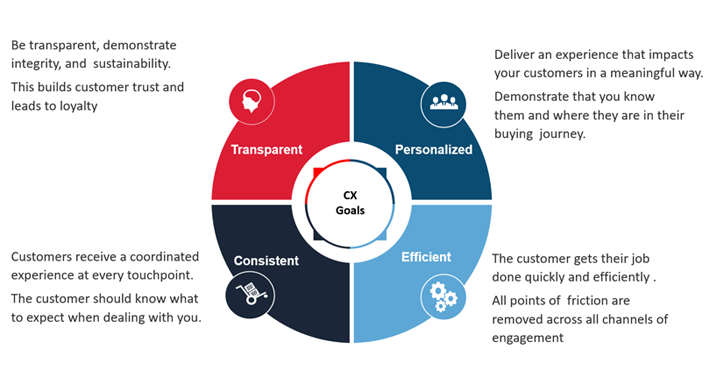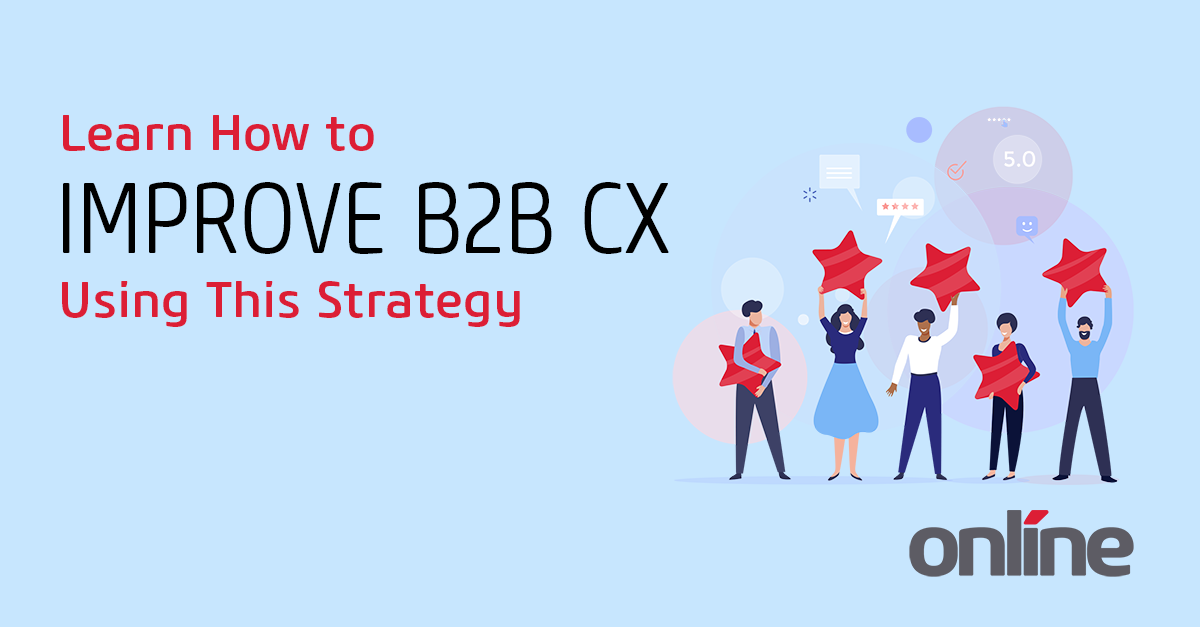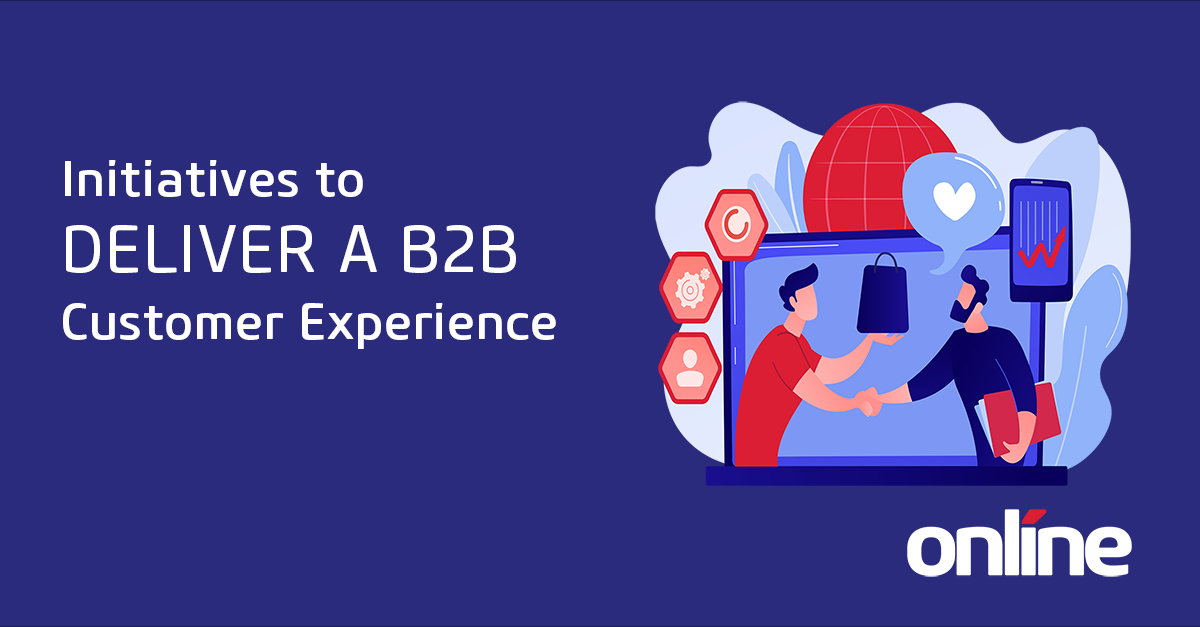How to Align Your Success With Your Customer's Success
How we treat customers has a significant impact on their perception of us. 85% of business buyers say that their experience with a company matters as much as its products or services. 37% of B2B buyers have reported errors with online orders at least weekly, compared with just 28% experiencing weekly mistakes the year previously.
Leveraging digital technology to build customer relationships isn’t optional anymore. If you want to foster long-term customer loyalty and generate a competitive advantage, B2B companies must take a fresh look at customer engagement and leverage technology and business processes to improve the experience.
How to Improve B2B Customer Experience
How do customers interact with your company today? How do they want to interact in the future? Focusing on these two points, B2B businesses can sketch out how to get to an even more customer-centric company.
Business Strategy = Vision + Goals + Initiatives
For the purposes of this post, we will define strategy as a series of steps to achieve a future vision.
A vision is what the business intends to accomplish in the future.
Goals are the milestones that you track toward achieving that vision.
A roadmap outlines and prioritizes the specific initiatives the business should execute to achieve its future vision and capture realized value.
This is part one of a two-part series on developing a customer experience strategy. Part I defines what a Customer Experience (CX) vision and goals look like. Part II focuses on the initiatives associated with its delivery and considerations for creating a roadmap.
What is a CX Vision?
Vision is what the business intends to achieve in the future. Companies use their vision statement to drive related goals and initiatives required to achieve this future state.
Similarly, a CX Vision captures a customer-centric approach's impact on a company. It brings together culture, capabilities, and agility that once the vision is achieved, generates customer, business, and stakeholder value. The diagram below describes a potential future state that a customer-centric B2B strategy could create:
-
A culture of customer-centricity: Customer wellbeing is #1; employee empowerment is inseparably related
- Holistic alignment of business capabilities: Customer experiences are aligned across all the departments
- Continuous Transformation: Customer experience progressively takes hold as a permanent part of the culture
- The Realization of Business Value: Realization of achievement heightens business, customer, and stakeholder value
For each organization, the specific items may look different, but their essence will remain similar.

Proceeding without a CX vision is like going on a trip and not knowing what the destination is. Time, effort, and cost will be spent, and you may end up at an undesirable destination.
What are the Goals of a B2B CX Strategy?
Visibility into your progress towards achieving your vision is crucial. Goals are the milestones that allow you to track progress and validate that the vision has become a reality. Here is a sample of CX goals a B2B company could establish for themselves in the following diagram.

The achievement of CX goals is reflected back to the customer during their interactions with your company; in other words, your customer often doesn’t know your goals, but they experience them as they interact with you. A B2B company might set a goal to be efficient in their interactions with the customer by streamlining business processes through technology. For example, the customer will experience efficiency when the wholesale distributor automates the customer's eCommerce quote approval workflow by converting it to an order in one seamless easy step.
Set motivating goals
The goals important to your organization need to have value in achieving them. Ensure the goals align with the vision statements and the initiatives to achieve them. Seeing progress will demonstrate success and motivate the company to continue the CX improvements.
Measurable outcomes
Goals must be tied to measurable outcomes to track your progress. Outcomes are specific, measurable statements that tell you when you have reached your goals. In addition, outcome statements measure the changes in your company you expect to occur because of executing your strategy. Measurable outcomes help separate reality from rhetoric.
Create clear goals and associated outcomes
For goals and their outcomes to be powerful, they should be designed to be SMART, which is a commonly used guide to help with goal setting:
- Specific - clear and well defined
- Measurable - include precise amounts, dates, and so so you can measure your degree of success
- Attainable - make sure that it's possible to achieve the goals you set
- Relevant - should be relevant to the direction you want your company to take
- Time-Bound – achieving your goals must have a deadline
You may already have a plethora of data in your various enterprise systems, such as an ERP, eCommerce, CRM, surveys and focus group results. One option is to consolidate your data into a central repository (data warehouse, data lake), create analytics that tracks goal outcomes and displays them on dashboards, or create reports to track how your customer’s behaviour and experience improve.
Up Next
Now that you have the B2B CX Strategy started with a definition of the vision, goals, and measures, you have the groundwork set for the second part of this series - defining the initiatives that create a customer experience that will generate competitive advantage and foster long-term customer loyalty. Here is a link to Part II on developing a B2B Customer Experience strategy.
About Gil Meier, Principal Consultant, Digital Transformation

Gil Meier is passionate about ever-changing digital technology and its opportunities in various industries, particularly B2B.
Gil helps companies define and deliver their digital transformation growth by applying innovative products, services, and business models that take advantage of digital technologies.



%20from%20Onlines%20CTO%20.jpg)
Submit a Comment